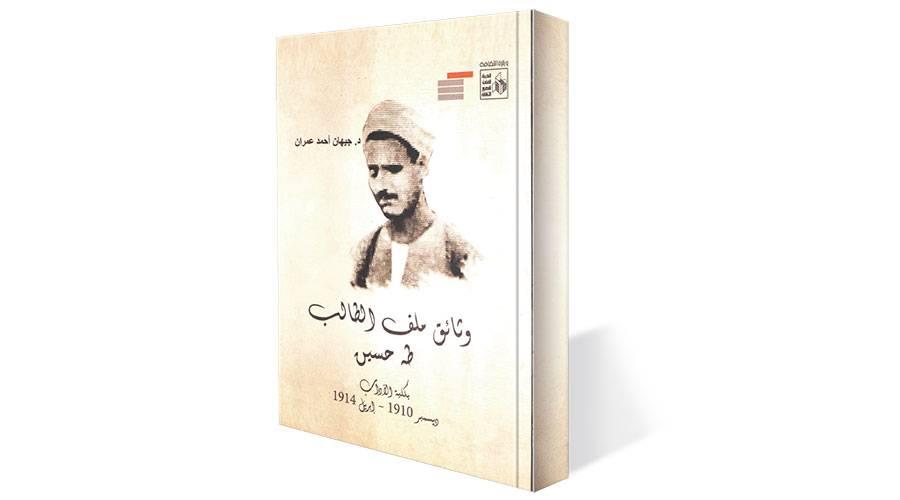In her book “Documents of the File of Student Taha Hussein at the College of Arts,” in the period from December 1910 to April 1914, Jehan Ahmed Omran deals with a group of documents that have never been studied before, with their diversity and historical richness, as they deal with an aspect of Taha Hussein’s academic life, which is File documents of the student Sheikh Taha Hussein, who joined – as part of the study – the Egyptian University in 1910.
The file documents cover the period from 1910 to 1914 and are attached to his job file, which is digitally preserved in the electronic memory unit at the College of Arts. This file contains 240 documents covering his career work at the college since his appointment as “Professor of Arabic Language Arts”: on the first of July 1925 to The last document in the file is dated 1961.
Based on the file, the book deals with studying the documentary collection attached to Hussein’s file, and publishing it due to its importance in shedding light on the academic aspect and student activity of him as a student on the campus of the Egyptian University in particular, and on the administrative and educational procedures taken by the university at that time to register the student affiliated with it in general.
These documents cover the academic period from Hussein’s enrollment at the university on December 5, 1910 until he took the “History of French Literature” exam on April 25, 1914. They include letters submitted by the student to both “His Excellency the Galilee Prince, President of the Egyptian University” and to the “University Secretary” at the time. Then, at the beginning of the procedures for appointing him as a professor of Arabic language literature on the first of July 1925, a job file was allocated to him with an archival code to preserve his job documents.
The study of this documentary collection is divided into three chapters: The first: Enrollment and admission procedures to the Egyptian University, and examination results, which includes studying the enrollment form for the student Taha Hussein, affiliated with the university for the two academic years 1910-1912, then a letter of acknowledgment from the university to Al-Azhar University, regarding verifying the student’s enrollment at Al-Azhar University and the fees for attending lessons. , taking the exam, and student exam results forms during the period from May 4, 1912 to April 25, 1914.
The second section includes two complaints. The first was submitted by the student Hussein to the university secretary, dated January 23, 1912, in which he complained of the insult he was subjected to by one of the secretarial employees, when he was prevented from attending the lesson, for not paying the attendance fees. This was followed by the second complaint submitted by some University students, including Hussein, to the head of the Egyptian University administration, dated February 3, 1912, regarding the ill-treatment to which university students are subjected, by university employees.
The third axis deals with Hussein’s student activity during the period of his affiliation with the university. He participated with the students in forming the “Group of Egyptian University Students” on March 9, 1912, drawing up a law regulating the work of this group, and choosing Taha Hussein as its elected president, explaining in the text of this law the purposes of this group and its members. Its provisions, how to elect the Chairman of the Board of Directors, the controls for the group’s meetings, and its financial source of revenues.
This law was included in the study file, accompanied by a letter submitted by its president, Hussein, to the university president, introducing the group’s affairs, requesting that a hall be allocated to it on the university campus, and permission to announce it at an opening ceremony for its activities. Through the appendices, the writer publishes the documentary collection, displays its paintings, and the importance of these documents. It sheds light on the academic aspect and student activity of Hussein Al-Taleb, and on the administrative and educational procedures of the Egyptian University.
